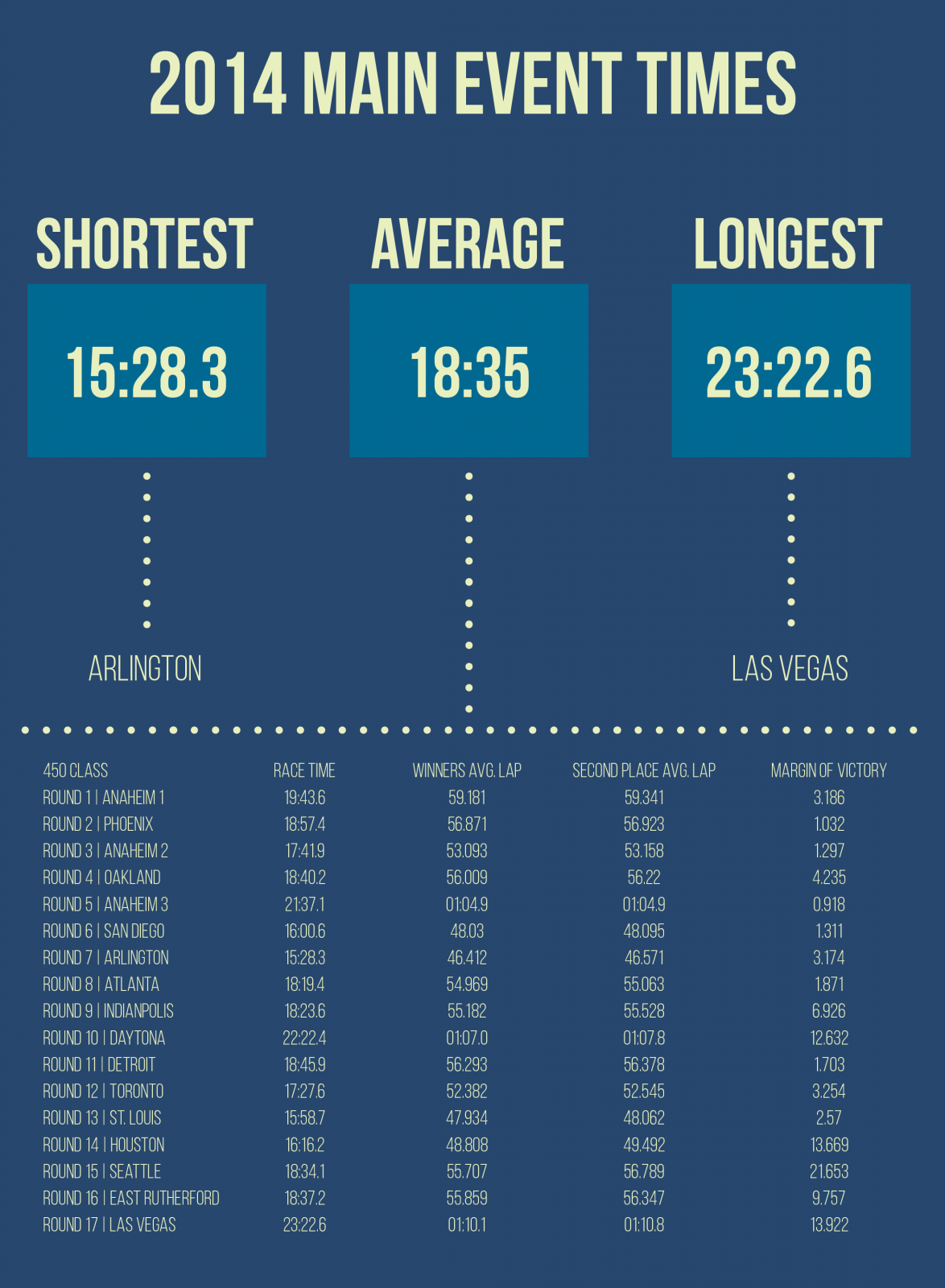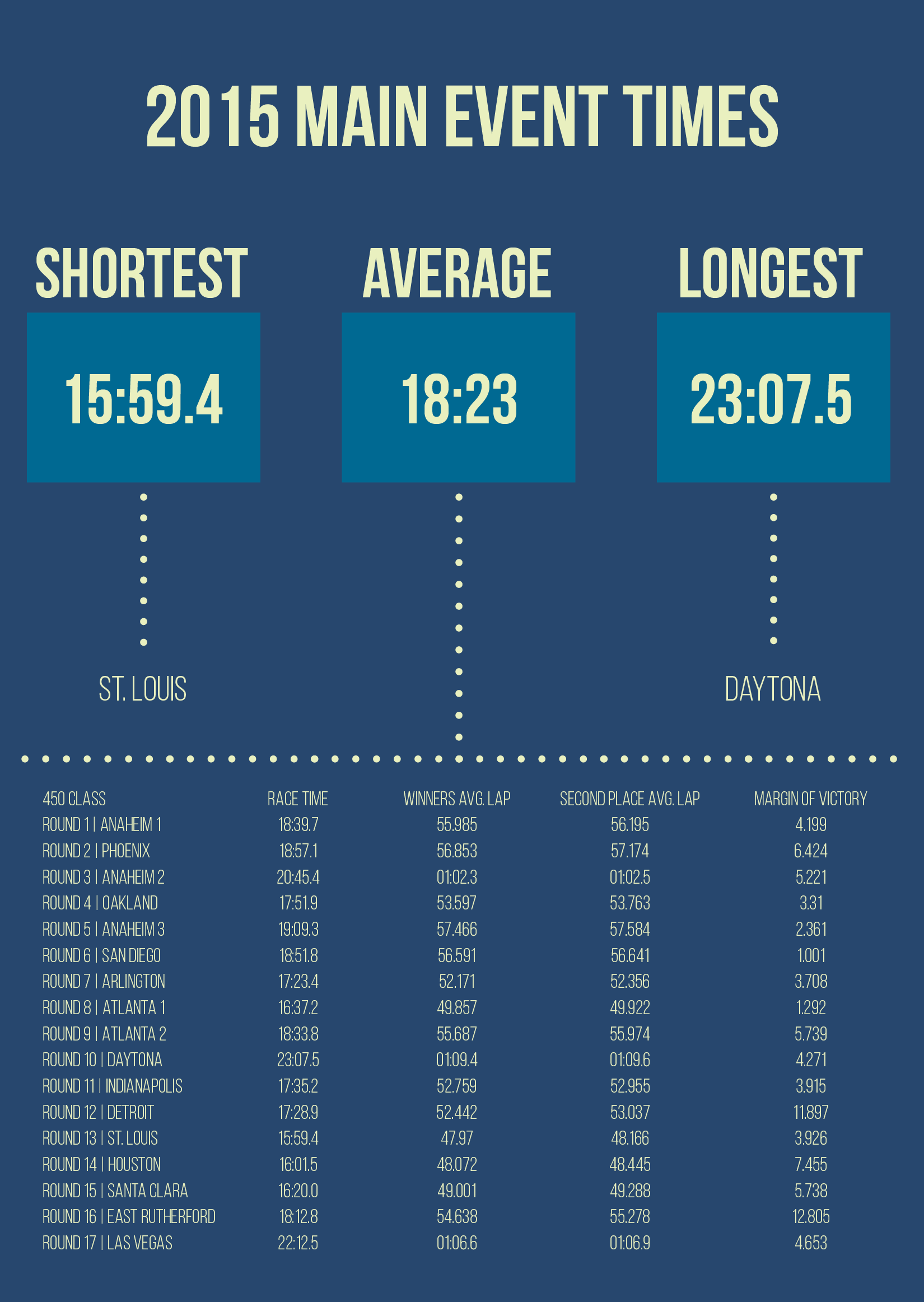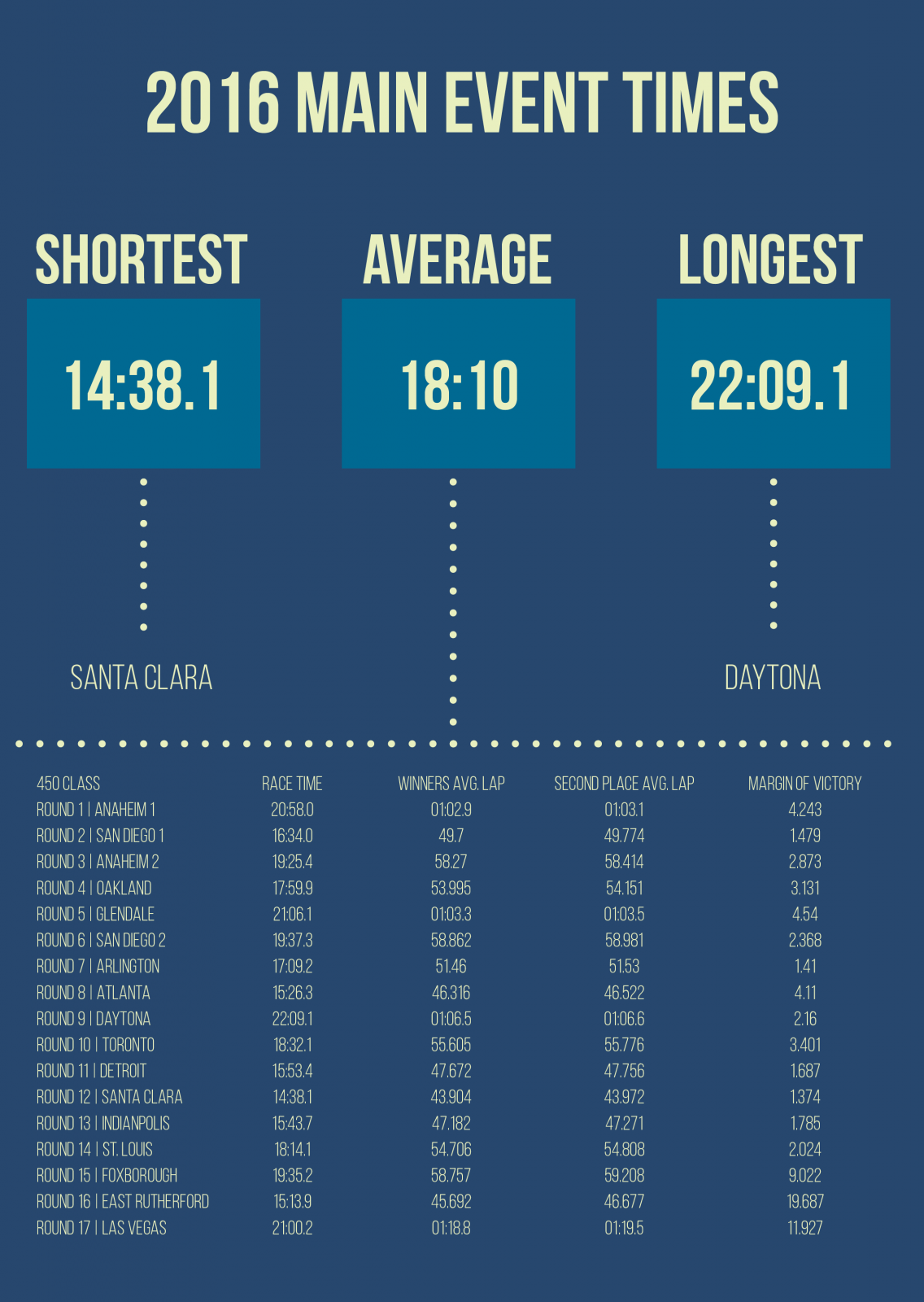Last week, Feld Motor Sports, promoters of Monster Energy AMA Supercross, announced the first major format change (excluding the reintroduction of Semi races a few years ago) to the series since 1985. Races will now be timed instead of run under a set number of laps. The thought process behind the decision was to give fans a longer show, as well as bring cohesion to the program, with every heat, semi, LCQ, and main event running the same amount of time.
"We believe this change will bring the fitness element more into play and provide more excitement for our fans," said Dave Prater, senior director of operations - two wheel, Feld Entertainment.
How much more bang for the buck are fans getting in 2017? 450 main events will be 20 minutes plus one lap. Let’s estimate how much longer riders will be on the track in the 450 main events next year. Thanks to data provided by the AMA, we’ve compiled three years worth of stats from Monster Energy Supercross. (We also compiled numbers from the 250 Class, which we will release tomorrow.)
2014
During the 2014 season, only three times (Anaheim 3, Daytona, and Las Vegas) did the 450 main event surpass 20 minutes. Also, four main events during that year were under 17 minutes.
2015
It wasn’t much better in 2015, with just three main events (Anaheim 2, Daytona, and Las Vegas) lasting more than 20 minutes. Similar to 2014, four main events in 2015 lasted less than 17 minutes.
2016
This past season, four main events (Anaheim 1, Glendale, Daytona, and Las Vegas, noticing the trend?) exceeded 20 minutes. But, there was a three-year record-high of six main events running less than 17 minutes—not exactly a ton of time to see your favorite riders.
By adding up lap times, we have a rough estimate that if timed main events were used during the 2016 season, the average number of laps per round would have been 24. Santa Clara—the shortest races last year, clocking in at 14 minutes, 38 seconds—would have had the most laps at 29. Glendale and Daytona—the longest two races—would have featured the least number of laps with 20. It’s telling to see that only on an extremely long track (Daytona’s outdoor-style venue, and Glendale, where the riders went outside the stadium for additional track length) would the riders end up doing only 20 laps in the new 20 plus one format. If we had the exact same tracks and lap times in 2017, 15 of the 17 rounds will end up with more laps than in 2016. That’s a significant change.
Or is it? A few riders that have commented on it aren’t sure.
We asked Eli Tomac last week and he said, “It won’t affect anyone in the top five. All of those guys are gnarly and you’re not going to just go blowing past those dudes.”
Justin Barcia mentioned it in an interview earlier this week. “I kind of heard it was coming for a while now so I’ve been doing a lot of 25-minute motos on the supercross track. It’s a long time out there, but it’s no different than an outdoor race. And as an amateur you’re always doing 20-minute-plus-two-lap motos, so I think it’s not something that’s really different, so I think it will be good and it’ll good for racing.”
All of the elite riders believe they’re in good enough shape that an extra few laps won’t impact their riding. But we have a feeling it might make a difference for other reasons. Further back in the pack, some riders still struggle to run the pace for 20 laps—they might struggle even more when faced with 24. This could also mean lapped traffic could become an even bigger factor. And what about track deterioration? With both the 250 and 450 main events set to run more laps, the tracks will only get torn up more.
Will fitness play a larger factor? We’ll see. But lapped traffic and rougher tracks are bound to make at least some difference in how the races play out. Should be interesting to see it all happen in real time, for real.






